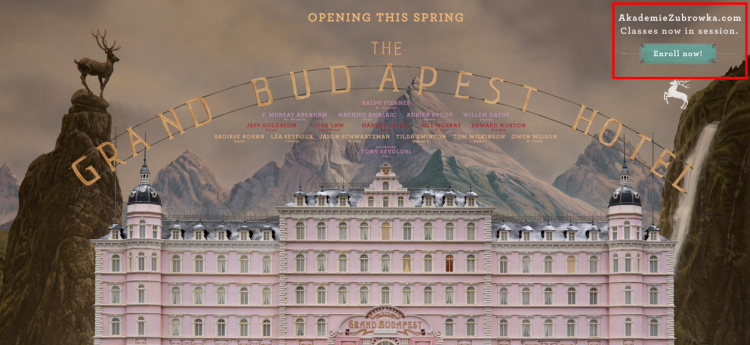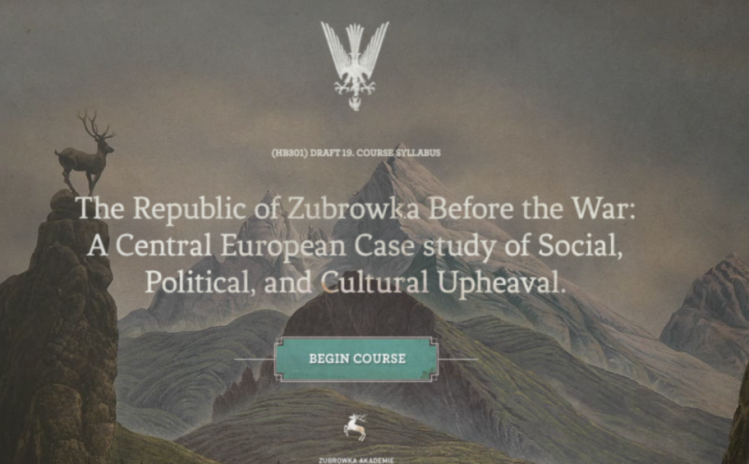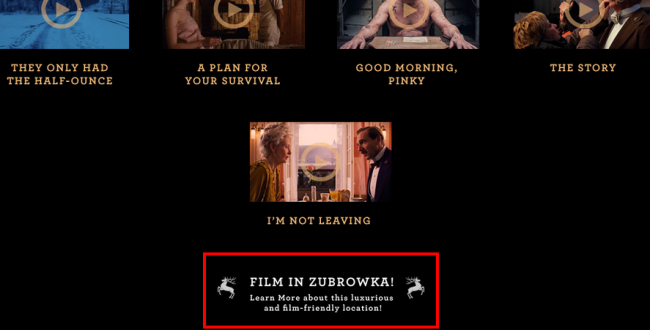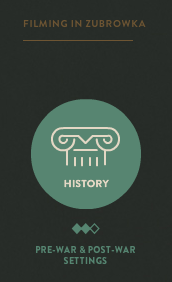With the help of the Internet, filmmakers today can now produce creative works across an increased variety of mediums. The practice of “transmedia storytelling” incorporates any of a number of platforms into what is otherwise a single narrative structure, allowing for expansion of fictional worlds and plotlines that are still uniform and accessible within one overarching narrative franchise (Jenkins). According to Henry Jenkins, functions of a transmedia piece include (but are not limited to) extending or prolonging interest in a franchise when works deriving from its traditional medium are not in production, expanding target audiences, increasing interactivity between the producer and the consumer, and both filling and creating gaps in plot information to maintain audience interest. While Jenkins argues that often the different platforms convey entirely new pieces of information that cannot be obtained in the other mediums, even when the medium of narrative offers the same or similar information to that of one of its other mediums, it is “the pleasure… in savoring the variations…” and the multitude of ways they display any given information that allow each to pique audience interest (Murray, 36).
In order to see transmedia storytelling in action within a current and relevant media franchise, one need only look at Wes Anderson’s new film, The Grand Budapest Hotel, and its various marketing platforms. As the movie has yet to be released, the central source of information regarding Grand Budapest currently exists through its website. For purposes of clarification, any objects of interest will be boxed in red in each image.
The website’s prime function is to both communicate the mood of the film, as well as serve to link interested consumers to the various media entities created to supplement the film. In terms of interactivity, the website is both user-friendly and visually appealing. It reflects the purpose of the film in that it feels like a genuinely vintage object placed in a tech-heavy land- it is designed to be striking in its nostalgia and the “out of place” air that surrounds it. From here, the user needs only to choose where to begin their journey. In the upper right hand corner of the screen, the site vaguely references classes at a “Akademie Zubrowka,” offering little to no background information directly.
In an very Andersonian style, the user is directed through a series of animations that showcase the landscape surrounding the hotel, in the fictional Zubrowka County. From here, three “courses” offer supplemental information to the viewer interested in expanding their knowledge prior to the movie’s release. The marketing department uses an interesting strategy, in that it immerses the user in a platform that does not give any signs it is fictional. Instead, the site urges viewers to assume Zubrowka is real and thriving, further immersing them in the fictional world.
The entire platform seamlessly incorporates elements familiar to the user as that of any travel or academia website. Not only does this pique visual interest, it also allows the user to garner supplemental knowledge in a fashion familiar to the practice of “collective intelligence.” One could simply watch the film, or one could walk into the film with the supplemental knowledge the website provides and enhance their experience and immersion into the fictional world of the film.
If one goes back to the main Budapest site page and instead scrolls down to the bottom, a variety of links can be found that lead to the other sites. One of particular interest is the “official” website of the fictional Zubrowka Film Commission. Its purpose is to further immerse the viewer in the idea that the Grand Budapest is both real and visitable.
The Film Commission website is fashioned as a Tumblr blog, making it both relevant and navigable to the interests of its tech savvy target audience.
The illusion of realness is maintained with a formal and detailed “About” section, which offers interactive infographics boasting the benefits of working in the county. The entire illusion is both fun and effective, and makes one forget they are reading about a fictional world, if only temporarily. Both assist in fulfilling two of the characteristics of a successful transmedia story: worldbuilding and hypertext fiction.
The Film Commission website offers users a variety of information about the area and the plethora of accessible links within the interface encourage the user to spend significant time exploring all that it has to offer.
Furthermore, the links at the bottom of the page direct the user back to the main website and the Akademie Zubrowka site, seamlessly linking each of the additions to the film with a sense of self-reflexivity. The website encourages Internet sharing with the additions of Twitter, Facebook, and Google+ links, which help to advertise the film itself as well as its supplements.
Not only do these supplements function to provide increased information for fans, they also serve to advertise the film itself by expanding the world which the film creates. Whereas watching The Grand Budapest Hotel itself allows the user to see the tip of the iceberg emerging from the water, the various media websites created to supplement it allow fans to delve deeper into the fictional county of Zubrowka and the pastel-coated world Wes Anderson has so meticulously created. It is therefore an essential and relevant study in regards to its ability to communicate a story through various mediums.
Works Cited
“About the Commission.” Web log post. Zubrowka Film Commission. N.p., n.d. Web. <http://zubrowkafilmcommission.tumblr.com/>.
“Akademie Zubrowka.” Grand Budapest Hotel – Akademie Zubrowka. N.p., n.d. Web. 01 Mar. 2014. <http://www.akademiezubrowka.com/>.
“The Grand Budapest Hotel.” The Grand Budapest Hotel – A Film by Wes Anderson – Coming 2014. N.p., n.d. Web. 01 Mar. 2014. <http://www.grandbudapesthotel.com/>.
Jenkins, Henry. “Transmedia Storytelling 101.” Web log post. Confessions of an Aca-Fan. N.p., 22 Mar. 2007. Web. 1 Mar. 2014. <http://henryjenkins.org/2007/03/transmedia_storytelling_101.html>.
Murray, Janet Horowitz. “Harbingers of the Holodeck.” Hamlet on the Holodeck: The Future of Narrative in Cyberspace. New York: Free, 1997. 27-64. Print.













The first paragraph of the blog provides an thorough paraphrased definition of transmedia storytelling. The blog post does a great job engaging with images, which are often annotated to help lead the reader to the conclusions you make in your text. The last paragraph of the blog post does an excellent job leaving the reader with a clear idea of your main points and what you wanted them to take from the text. One of the main things that could improve the blog post would be to engage more with the readings. Though the website is thoroughly explored in terms of style, intention, and content, the analysis of details of the website overlooks ways the readings tie into specific elements. Also, be sure to define keywords for readers who might not be familiar with some of these concepts, like world-building and hypertext fiction. There is definitely an opportunity to build on these concepts within the blog post, engaging with the readings.